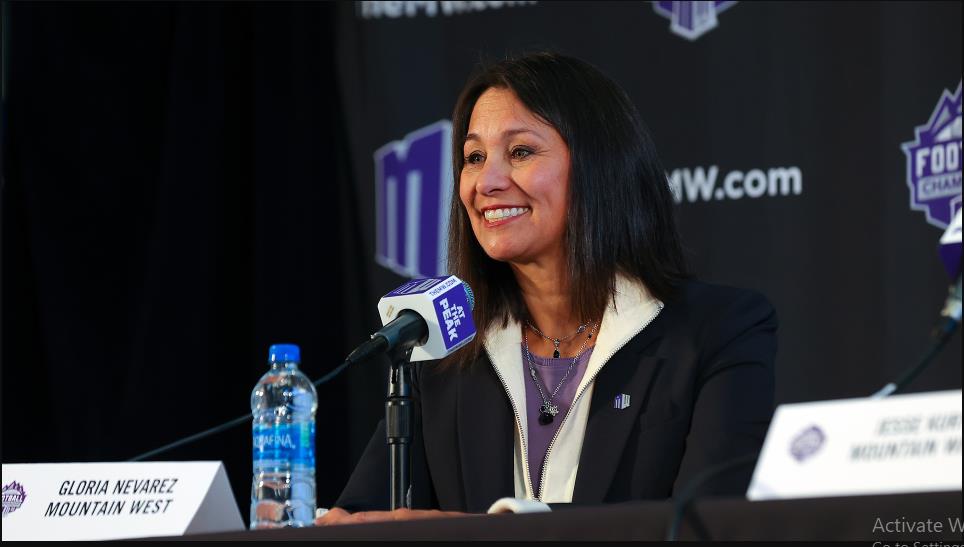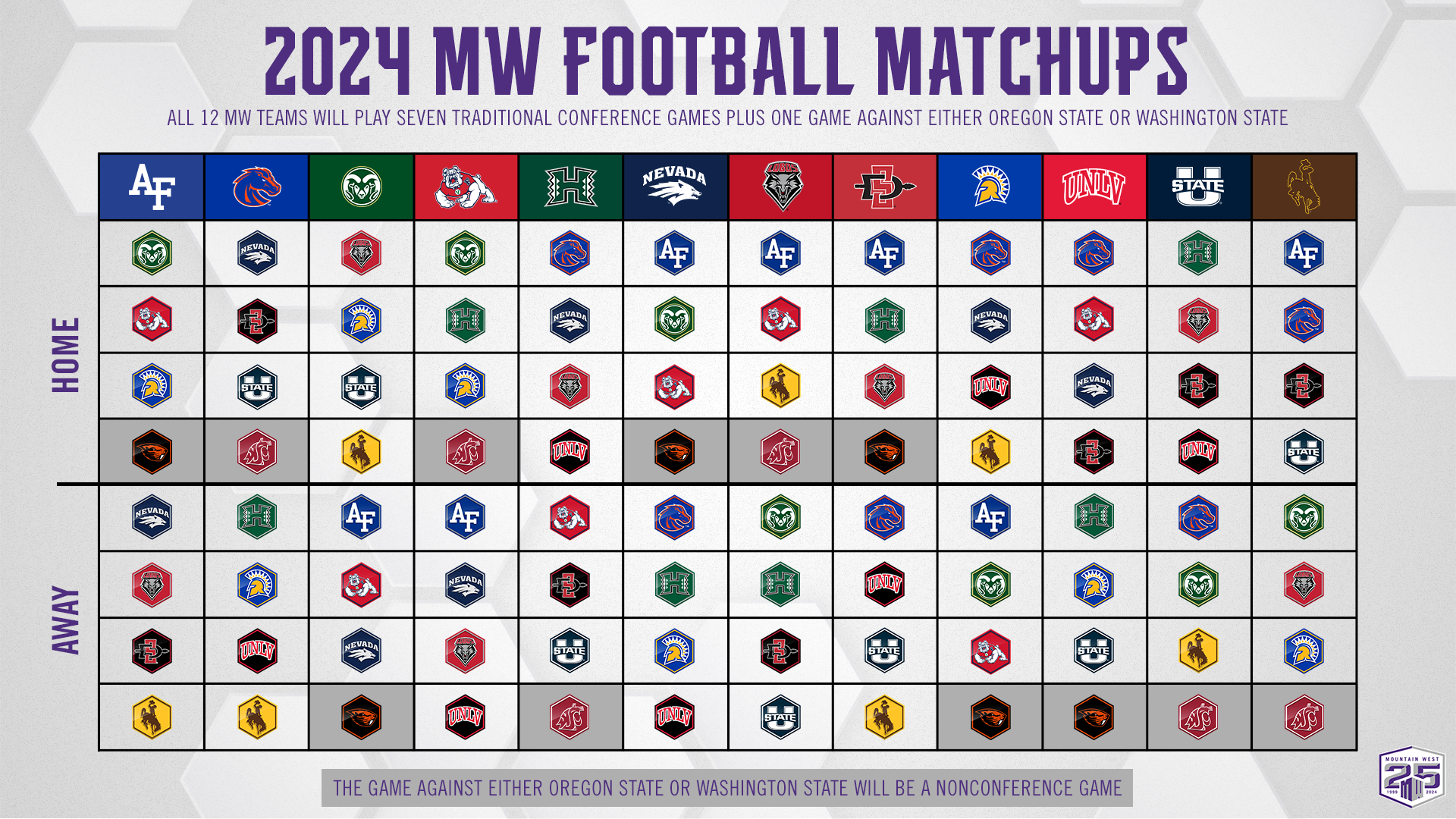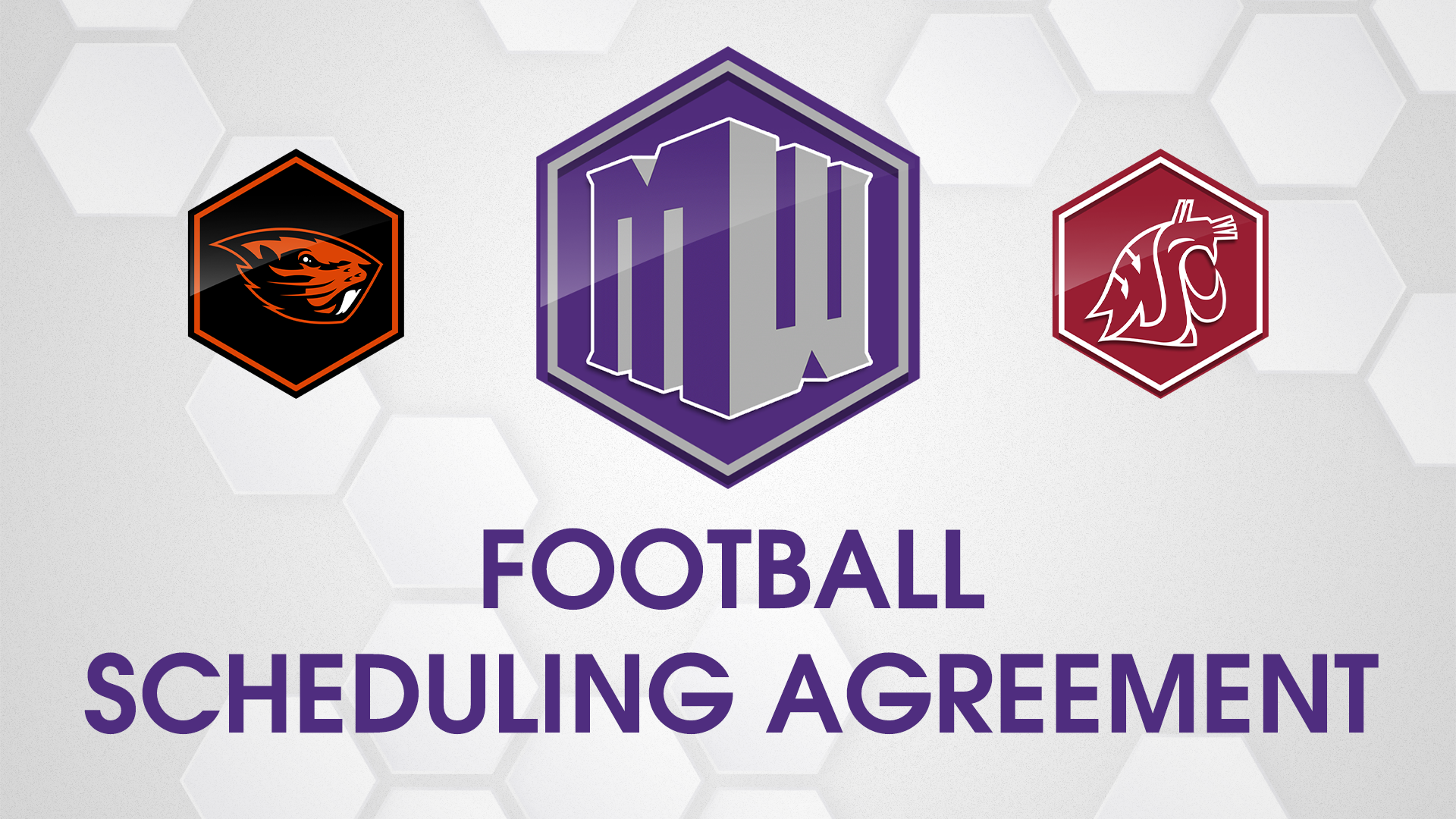
The Mountain West and Pac-2’s deadline to extend their football scheduling alliance passed Sunday without the parties mutually extending it for the 2025 season. So, what’s next for the MW?
In the short term, nothing. The two sides will play the 2024 season as pseudo-partners with each MW team playing at least one game against Oregon State or Washington State with the MW getting $14 million to play 12 games against the Pac-2.

In the long term, there will be a ripple effect.
For 2025, the MW will go back to an eight-game conference schedule after truncating league play to seven games this season to accommodate games againstOregon State or Washington State, which not only added revenue to the conference but also was meant to boost the MW’s overall strength of schedule. But the move to seven conference games didn’t come without some consternation from the coaches as it led to an even more unbalanced schedule with some MW teams hosting only three league games while others had four at home.
The general reporting makes it seem like the Pac-2 was the more lukewarm side on extending the deal. The agreement not only cost Oregon State and Washington State $2,333,333 million per home game in 2024, well above the going rate for a non-conference contest. It also required the Pac-2 to agree to punitive poaching fees if it took some but not all members of the MW, all but making that impossible during the NCAA’s two-year grace period extended to the Pac-2 to get to at least eight full-time members.
With the scheduling alliance not extending to the 2025 season, those major poaching fees (outlined here) only extend toAug. 2, 2027 with the Pac-2 having until July 1, 2026 to get to eight members, putting Oregon State and Washington State in a sticky situation in its attempt to rebuild the conference.
The Pac-2 would have owed the MW another $9 million in 2025 to unlock those 12 additional non-conference games against MW opponents, six for the Beavers and six for the Cougars with each playing three at home and three on the road. The MW weighed in on the scheduling alliance not being extended in a short news release to the media Monday.
“The football scheduling arrangement with Oregon State and Washington State was a one-year agreement,” the MW said in a statement. “For the 2025 season, the Mountain West and its member institutions are moving forward with their conference and nonconference schedules. Our focus remains on the current season and our exceptional teams.”
The schedule alliance contract included a clause that said the Pac-2 and MW would “negotiate in good faith the consummation, as promptly as reasonably practicable, of a definitive transaction pursuant to which all MWC Member Institutions join Pac-12 as Pac-12 member institutions with no MWC Exit Fee payable by any MWC Member Institution to MWC.” That doesn’t appear to have happened in any substantial way.

Reporting seems to indicate the move toward a full merger between the sides has frozen rather than thawed in recent months. The first sign of that came when the Pac-2 joined the West Coast Conference rather than the MW in most of its non-football sports for the next two seasons. The one-year football pact with a second-year option also seemed to indicate a lukewarm feeling between the sides. And now the deal wasn’t extended for that second season. That leaves Oregon State and Washington State in scramble mode with their 2025 football schedules as both sides have six games or fewer next season with neither school having a game scheduled in October or November, the toughest months to get non-league games as most conferences are in league play.
One interesting angle to watch will be whether a MW school throws Washington State or Oregon State a lifeline with a 2025 non-league game. If I was the MW, I would be against that. But Nevada, for example, has only three non-conference games scheduled for next with a road game at Penn State and home contests against Sacramento State and Middle Tennessee. Nevada could use a second big-money road game with its current game-guarantee net for 2025 being $750,000 in the positive, well below this year’s plus-$1.3 million. If Oregon State, who Nevada would have played at in 2025 if the scheduling alliance was extended, offered the Wolf Pack seven figures for a road game in 2025, that’d be hard to turn down.
Barring a Hail Mary in which future conference realignment lands Oregon State and Washington State in a power conference, I struggle to see an end game for Beavers and Cougars that doesn’t end with a full reverse merger with the MW. That seems the most likely final outcome, butOregon State and Washington State appear to doing everything they can to avoid that outcome, including pulling the plug on extending the football scheduling alliance for the 2025 season.

The MW remains in a strong position as long as it sticks together. While San Diego State, Boise State, Colorado State and others in the conference have shown major interest in leaving the MW in years past, the league’s contracts and bylaws will make that difficult shy of a three-quarters vote to dissolve the conference. That remains the most dangerous outcome for some MW members as nine of the 12 football members could vote to leave the unlucky three behind while recreating a new Pac-12 with Oregon State or Washington State. Short of that, the MW continues to have the leverage despite the scheduling alliance being a one-year pact rather than the two many envisioned when first hatched.
Leave a Reply